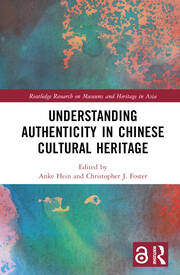Understanding Authenticity in Chinese Cultural Heritage explores the construction of "authenticity" and its consequences in relation to Chinese cultural heritage—those objects, texts, and intangible practices concerned with China’s past.
Including contributions from scholars around the world reflecting on a range of different materials and time periods, Understanding Authenticity emphasizes the situatedness and fluidity of authenticity concepts. Attitudes toward authenticity change over time and place, and vary between communities and object types, among stakeholders in China as they do elsewhere. The book examines how "authenticity" relates to four major aspects of cultural heritage in China—art and material culture; cultural heritage management and preservation; living and intangible heritage; and texts and manuscripts—with individual contributions engaging in a critical and interdisciplinary conversation that weaves together heritage management, art history, archaeology, architecture, tourism, law, history, and literature. Moving beyond conceptual issues, the book also considers the practical ramifications for work in cultural heritage management, museums, and academic research.
Understanding Authenticity in Chinese Cultural Heritage provides an opportunity for reflection on the contingencies of authenticity debates - not only in relation to China, but also anywhere around the world. The book will be of interest to scholars and students in a variety of fields, including heritage studies, Asian studies, art history, museum studies, history, and archaeology.

